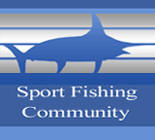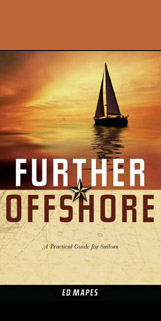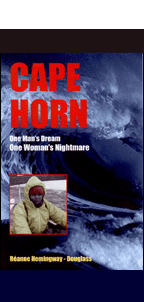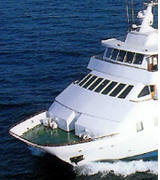|
When it comes to dealing with heavy weather at sea, sailors have a
number of options. One is to reef down and then heave-to. Another is to
stream a drogue astern. A third is to deploy a parachute sea anchor.My husband, Bob, and I have a sea anchor aboard our
36-foot cutter, Illusion, and we’re glad we do. Before we made the
decisions (a) to purchase one, and (b) which one to purchase, we
researched the subject extensively. Among other things, we found that
there are a number of differences between the products of the three
major American manufacturers. Deciding which best suits your needs
depends on the type and size of the boat you own and the type of sailing
you plan to do. A parachute sea anchor is basically a drag device. Normally deployed off the bow to windward, it is designed to hold the bow into the wind and waves. This stabilizes the motion of the boat while maintaining a safe attitude to the seas. Forward motion is stopped, but some leeward drift ideally, no more than 1 or 2 knots—occurs. Deploying a sea anchor can buy you time for sleep or nourishment in heavy weather or let you wait until a heavy fog lifts or daylight arrives before making landfall. A sea anchor can also help hold you off a lee shore while you make an engine or rig repair.
The Fiorentino
9-foot para-anchor (top); a 9-foot Para-Tech sea
Fiorentino's stainless para-ring attachment and shroud line(top); Para-Tech's galvanized shackle (middle); Shewmon's galvanized thimble attachment and shroud lines (bottom) Photo by Cary Derringer
The Gear
Cost, weight and storage. These were issues for us. With all the components needed for the deployment and retrieval of a sea anchor, we wanted quality at an affordable price without any surprises for extras or additional shipping costs. Because we cruise for extended periods and carry a lot of gear, we considered both how much the equipment weighed and how compact it would be in storage. We also considered how each system would handle in high winds and seas, with the attendant dramatic boat motion, seasickness, and crew fatigue.
Dealing with chafe. To control chafe on Illusion, we use a very heavy duty section of hose tied along the bowsprit and over bow roller. The hose’s interior has a hard surface and is one that will stand up much better than a softer material as the rode passes through it. In addition, we “freshen the nip”—that is, we let out a small amount of rode—every hour to present a new section of rode to the hose and roller surfaces. Needless to say, we also check the rode, the boat, and the chafe gear frequently.
Dynamics. Sea anchors tend to ride near the
surface of the water, and a breaking sea with moving water at the
surface can invert or badly twist the anchor. There is an increased
potential for entanglement with floating debris when the anchor is near
the surface.
One solution is to deploy a larger canopy than the one
specified for the size of the boat. However, a bigger canopy costs more,
weighs more, and may exert excessive loads on both the rode and the
boat. Some manufacturers sew lead weights into the hem of their
canopies, while others use specialized hardware.
If you do add a parachute anchor to your boat’s
equipment, practice deploying and retrieving it. Start in calm water,
then try it in more moderate conditions. Become familiar with the
system’s components, and make sure that everyone who might be handling
the device knows how to use it. The secret to a successful launch is
knowing how to use the equipment well before you need it.
|
|


















